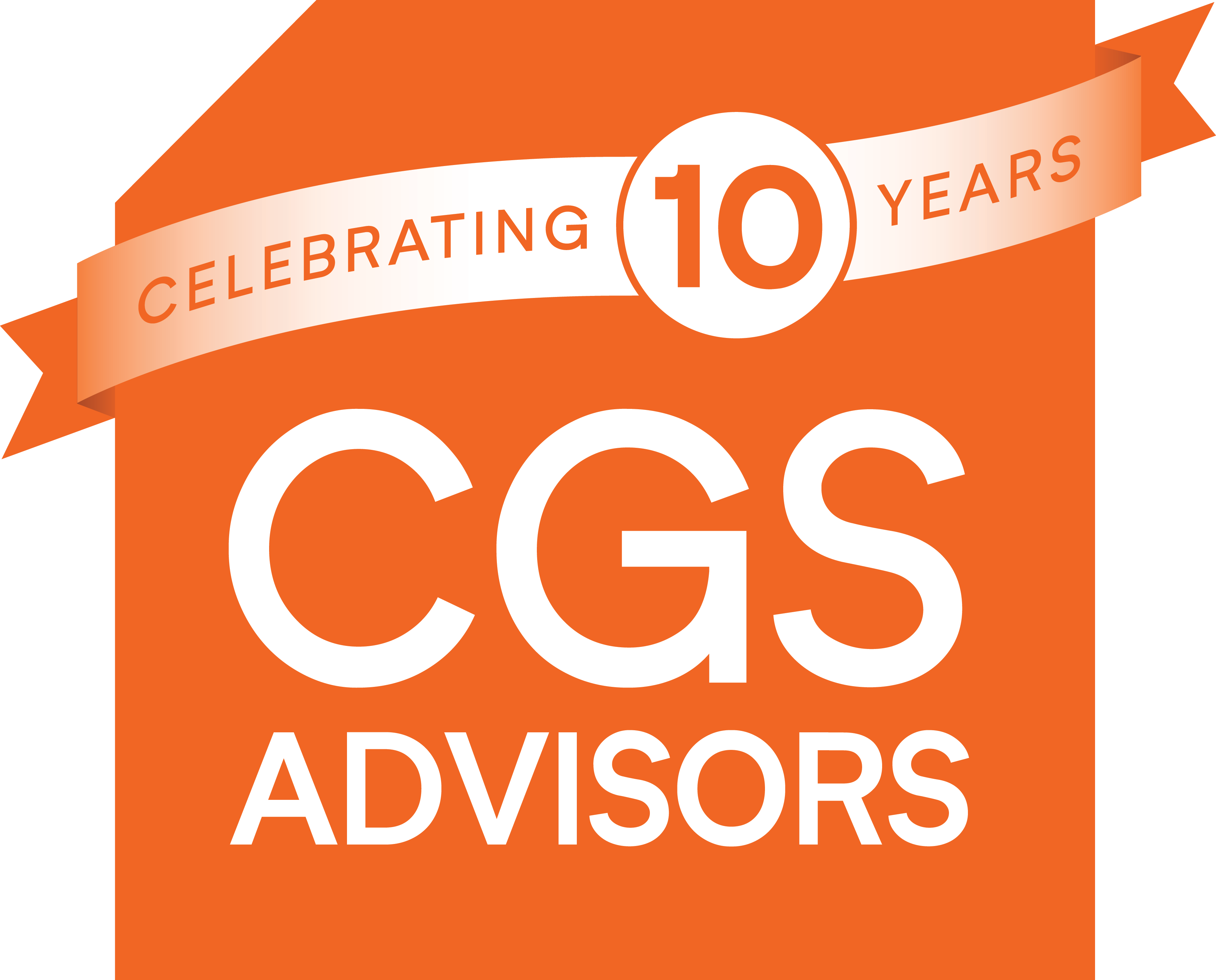So You Want to Buy Innovation?
Elizabeth Semrau and Angie Tuglus, two members of the CGS Advisors team, discuss how to augment the innovation capability in established organizations. Liz has supported multiple efforts to stand up or adjust corporate innovation efforts and Angie has made a career of innovating from the operator’s seat.
_____________________________________________________________________________
Liz: Hey Angie. Ready to talk innovation today?
Angie: Absolutely. I love innovation.
Liz: So do I. We could take this conversation so many directions….Today let’s focus on the concept of buying innovation. Time and time again, companies tell the public and their employees that they want to be innovative. Companies try building it internally, acquisition, and more. Let’s chat about approaches for driving innovation, and, more specifically, can you buy innovation?
Tuglus: That’s a great discussion topic. The answer is “it depends.” Let’s begin by defining innovation. Innovation is applying new concepts and technology to create business value.
Semrau: Or, if we want to be more formal, we might say it is the consistent application of new or unique ideas that support enterprise strategy and create stakeholder value.
Tuglus: I’ll leave the formality to you, but we are very much in alignment. Now you say you want to buy some innovation?
Semrau: Yes. And though it sounds easy, we both know there is a level of complexity to buying innovation beyond the dollars and cents.
Tuglus: Well, it is certainly not as simple as purchasing a new tool at your local hardware store. But you can indeed buy innovation. In some situations. Though you won’t always want to. This depends greatly upon your organizational goals. Those will dictate whether you should buy it, or build it into your organizational culture.
Let’s consider the most common underlying goals when an organization says it wants innovation.
Are you seeking to develop new revenue streams? Redesign operations to improve speed or margins, or to offer an entirely different customer experience? Develop a more intense approach to continuous improvement, or maybe change your culture? Different scenarios require different thinking.
Semrau: Excellent point. I want to explore all scenarios. Let’s talk about developing new revenue streams first.
Tuglus: In this first scenario, companies are striving to innovate their overall corporate value proposition, as seen by investors. They are often not concerned with innovating their existing businesses, and instead want to append innovative new businesses to their enterprise. You can absolutely buy innovation in this situation. In fact, buying should be easier than building.
Semrau: Absolutely. Established or traditional organizations buying smaller innovative companies. Case in point – McDonald’s acquisition of Apprente and Dynamic Yield and Ford acquiring Quantum Signal – a defense contractor. But it can’t be as simple as just completing the acquisition, right?
Tuglus: Right – many companies struggle to gain real value from their innovation acquisitions. Truly understanding what you are buying, how you will leverage it, and then integrating effectively into the corporate machine, this all requires some deep thought and expertise in integration management. More than people often comprehend. If you plan to heavily integrate the purchase, that can be a complex and painful undertaking.
Semrau: That is more complicated than most people realize. And it actually starts to sounds more like building when you start to dig through those layers of integration.
Tuglus: Well, oftentimes you will not be integrating the purchase. But if you are, the secret is to treat it more like a transformation program. Treat an integration with the respect and consideration you would give a business transformation. Make sure there is clarity of organizational ownership, and apply transformation principles, from setting expectations and vision, to program leadership and organizational change management. Don’t underestimate the complexity.
Semrau: On the flip side, I think we can both agree building out an innovative offering internally, instead of buying, also has a lot of challenges. I’ve seen many organizations struggle to build out innovative new offerings, stifled by the way they have always done things.
Tuglus: Absolutely. And when you are simply seeking new revenue streams to diversify your offering, you are very likely to buy your way there. However, beyond integration complexity, there are some situations where you just can’t buy. Suppose you envision the exact innovative new offering you want, but cannot find one to buy, or at a price you can afford?
Semrau: Suppose that is the case. What if I need to build? What are some key insights to make that successful?
Tuglus: How much time do we have? If I had to just hit a few highlights, I’d recommend you isolate it from the corporate bureaucracy, hire the right type of leader, and let them build the first version, the minimum viable product, like a startup.
Semrau: When you say isolation, how far away are we talking?
Tuglus: Quarantine it. Limit interactions. And when it does interact, don’t let bureaucracy get within 6 feet…
But, seriously, as far as it takes to isolate it. Physically, that could be as close as the building next door. Functionally, it must be far, far away. Out of mind. It cannot be reliant upon all those corporate functions and processes that have been honed over time, quite effectively, to support ongoing operations. Those structures were not designed to support innovation.
Semrau: Thinking about corporate bureaucracy and its limitations has got me thinking about the second scenario. What if I want to seriously innovate my entire operation? Moving my entire operation next door wouldn’t exactly be effective. I know you have a lot of experience in operational transformation.
Tuglus: In this scenario, now we are talking about leveraging disruption to innovate your existing operations, in a significant way. Taking advantage of new concepts and technology that will have a material impact, enabling you to leapfrog forward with new capabilities and experiences. You might buy another company for their technology, especially to gain a new operating platform or advanced data capabilities. It is equally common to build or heavily customize existing technology. Either way, there will be nontrivial transformation work required to transition the organization to the future state. You are definitely facing a business transformation in this scenario. It can be a lot of work but can create powerful advantages.
Semrau: Let’s talk about the final scenario – where leaders are seeking to develop a more intense approach to continuous improvement. It doesn’t sound as cool. But it can be a really important focus for innovation. Can I buy this?
Tuglus: I’m glad you mentioned the coolness factor. You are right, this does not sound as impressive, however I would say that it is both an extremely common and very genuine goal. Often operational leaders really want their teams to generate spikes of meaningful improvement through applying new concepts and technology. They want their operations teams rejuvenated and empowered. Trying new things, testing and learning as a matter of course.
They don’t want a big program, and they don’t need an entirely new platform. They just need a new energy, focus, and framework to drive innovation in their core operations. It may not sound cool from the outside, but on the inside it can be quite powerful and achieve great things.
Semrau: Absolutely – Incremental innovation can drive incredible benefits for a company as well.
Tuglus: With the right leadership commitment and innovation expertise, your incremental innovation can yield some big ideas. Here’s an example from one of my past lives: an internal innovation idea was brought forward by some insurance employees, who shared a vision that a number of high complexity claims, which were handled by in-person visits, could be handled instead via live video. This idea grew into a test, then a pilot, followed by rapidly expansion. It delivered significant value both to the company, saving employee time and travel, and also to its customers, who could now have those claims handled in just minutes.
When you create a culture of innovation, people seek ways to make things possible, instead of seeking reasons not to try something. Some ideas will have a big impact, some small. But you’ll always learn. And you will have a much more resilient operation. If people are constantly trying new things, when a crisis occurs, they will be much more prepared to mobilize around that new thing.
Semrau: You can’t buy that.
Tuglus: No. You cannot buy culture.
Semrau: You may be able to buy great ideas to place into your innovation process, but when you want the mindset and support structure for innovation, the capability has to be built from within. You can’t buy an innovation mindset.
Tuglus: Experienced advisors can help set you in motion and establish a framework, but if your goal is to embed innovation into your organization in a repeatable and lasting way, then you need to put in some hard work and commitment from the inside.
Semrau: It sounds as though the level of embedded innovation culture and mindset varies based on the type of innovation you are focused on. Less required when you acquire a new revenue streams and more required when you are working on an operational transformation or an intense approach to continuous improvement?
Tuglus: Yes. In the first situation, the acquisition scenario, you do not need widespread culture change at all. You are simply adding something new onto your company.
In the second scenario, transforming your operation, I would say you need an innovation mindset in order to envision and guide the changes, but in terms of the ongoing operational culture, you have a choice. You can, but do not actually need to build an innovation mindset into the ongoing operations.
In the third scenario, where we build the capability for innovation into the operation, it is all about culture and mindset.
Semrau: The culture aspect is an important distinction between scenarios and should be a factor of consideration early in the process when leaders are deciding whether to buy an innovative offering, build it, or build an innovation mindset.
It would be fun to dive deeper into how to build that culture and the structure to help innovation thrive but that’s likely worthy of an entire discussion of its own….
Tuglus: That certainly is. Let’s save that for the future.
Semrau: Looking forward to it.
If you would like to explore how our team can support your innovation efforts, please reach to us at info@cgsadvisors.com.

CGS Fellow Angie Tuglus is an expert in operational business transformation and innovation, from startup to Fortune 10. A former executive in both technology and operations, she holds an MBA, a BS in Engineering, and likes to explore the business implications of trends, events, and technology.

CGS Manager Elizabeth Semrau is with CGS Advisors’ Innovation and Strategy Services practices. Elizabeth leads strategic implementation programs that assist clients in realizing their bravest visions. and works on enterprise innovation engagements with multiple clients, driving innovative governance programs and ideation challenges.


